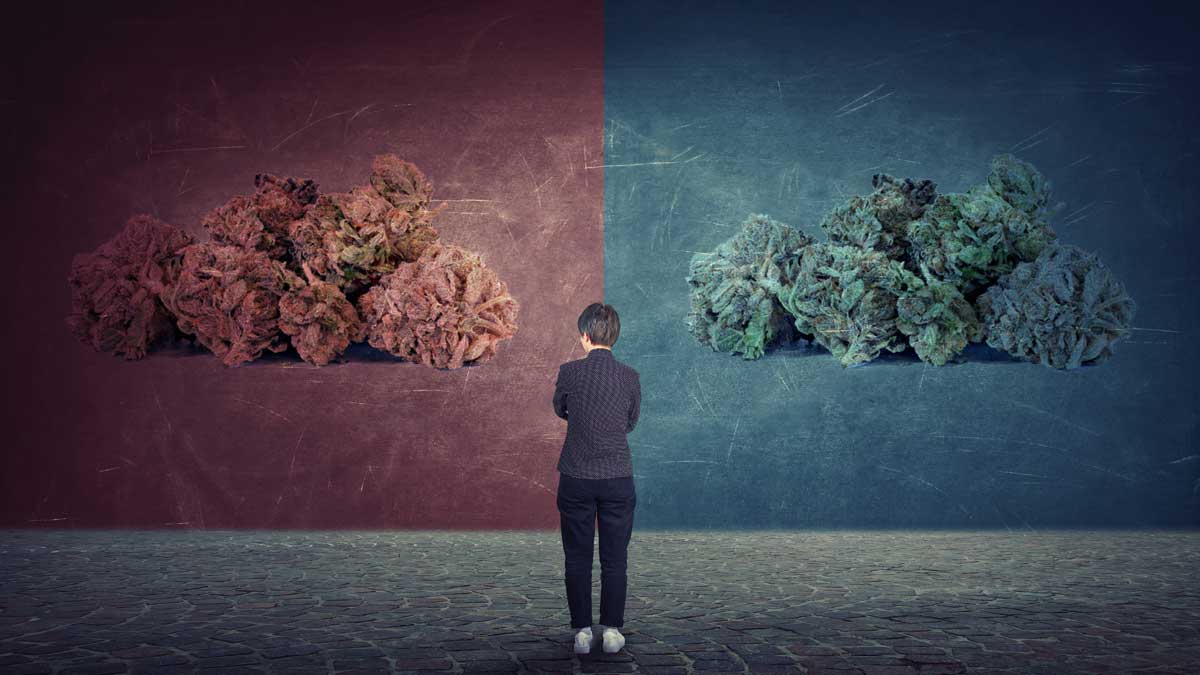There are 113 cannabinoids found in the cannabis plant, the most well-known being tetrahydrocannabinol (THC) and cannabidiol (CBD). These cannabinoids, along with others, interact with the endocannabinoid system (ECS), which is a natural system in the body. While the full scope of the endocannabinoid system’s functionality is not yet completely understood, research continues to explore its possible roles in areas such as appetite, mood, and energy. So how do we know what cannabinoids to use and when? Let’s take a look.
The Endocannabinoid System
There are two types of receptors in the endocannabinoid system: CB1 receptors, which are most prominent in the central nervous system, and CB2 receptors, which are located in the peripheral nervous system. THC is an agonist for CB1 receptors, and because these receptors are directly tied into the brain, this is associated with the euphoric “high” feeling many people experience. Activation of the CB2 receptors does not induce the same psychotropic effects as activation of CB1. As such, products that engage CB2 receptors may be preferred by those who want to avoid certain effects associated with consuming cannabis products.
The Entourage Effect
CBD is thought not to bind directly to CB1 or CB2 receptors, but rather influences other receptor activity and the body’s natural production of endocannabinoids. CBD may also affect certain outcomes when combined with THC, a phenomenon known as the “entourage effect”—in which various compounds found in the cannabis plant are thought to work together to create unique or enhanced effects. CBD can have different effects for different people, so experimentation is important to discover the best dosage and timing for individual needs.
It is because of this concept of a synergistic entourage effect between cannabinoids that whole plant products are becoming more popular. Because cannabinoids can interact differently when combined vs. when isolated, choosing a product containing a full range of plant compounds may offer a broader spectrum of effects, with each component contributing to the overall experience.
What’s Right for You: CBD vs. THC
To find the product and ratio that’s right for you, consider your individual tolerance, preferred method of consumption, and desired experience. For those looking for options without psychoactive effects, high-CBD products are available. THC is another key cannabinoid with distinctive properties. Topical THC products, however, are not associated with psychoactive effects. Those interested in cannabis products without the “high” may also explore THCa—the non-psychoactive cannabinoid found in raw cannabis and live cannabis plants.
There is a wide range of THC:CBD ratios, so some experimentation with different combinations can help identify what aligns best with your preferences and lifestyle. For example, a ratio of 1:1 THC to CBD will have different characteristics compared to a 30:1 CBD to THC ratio. A small amount of THC in a high-CBD product may influence the overall experience. On the flip side, a high-THC-low-CBD ratio may deliver more of THC’s characteristic effects, but some users find CBD enhances clarity or balance within that experience, such as influencing memory or focus that can sometimes accompany THC.
Jacquelyn Nause is a contributing writer with specialties in cannabis, real estate and wellness. She enjoys traveling with her husband, being a doting mother to her two incredible kids and enjoying the beautiful Pacific Northwest playground.
References:
- https://www.ncbi.nlm.nih.gov/pmc/articles/PMC4164977/
- https://link.springer.com/article/10.1007%2Fs11064-005-6978-1
- https://link.springer.com/article/10.1007/s00406-019-00978-2
- https://www.researchgate.net/publication/331333127_The_Association_between_Cannabis_Product_Characteristics_and_Symptom_Relief
- https://www.ncbi.nlm.nih.gov/pubmed/20884951/



















